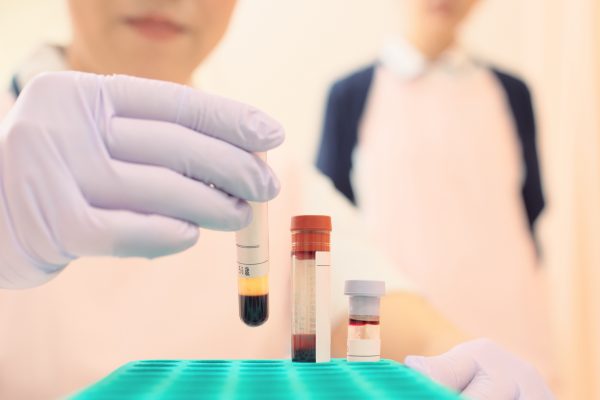
Etranacogene dezaparvovec, the first gene therapy approved for haemophilia B, demonstrated superior bleeding protection compared to continuous prophylactic factor IX treatment at the 18-month mark in the HOPE-B trial. This updated analysis reveals sustained disease correction 24 months post-gene therapy, further establishing etranacogene dezaparvovec as a safe and effective treatment option for patients with severe or moderately severe haemophilia B.
Moderate-to-severe haemophilia B necessitates lifelong, continuous coagulation factor IX replacement to prevent bleeding. Since 2011, numerous early-phase trials have explored adeno-associated virus (AAV)-based factor IX gene therapies for haemophilia B, demonstrating elevated factor IX activity, reduced bleeding episodes, and decreased reliance on factor IX replacement. Etranacogene dezaparvovec, an adeno-associated virus 5 (AAV5) vector expressing the Padua factor IX variant, represents the first gene therapy approved for haemophilia B treatment.1 Compared to continuous prophylactic factor IX treatment, etranacogene dezaparvovec demonstrated to be superior in terms of bleeding protection 18 months after gene therapy in the HOPE-B trial.2
This article presents post-hoc 24-month efficacy and safety data from the same trial, providing valuable insights into the longer-term effects of etranacogene dezaparvovec in individuals with haemophilia B.2
The phase 3 HOPE-B trial enrolled male patients aged ≥18 years with inherited haemophilia B, classified as severe (plasma factor IX activity level <1%) or moderately severe (plasma factor IX activity level ≥1% and ≤2%), exhibiting a severe bleeding phenotype, and maintained on stable continuous factor IX prophylaxis. Participants underwent treatment with a single infusion of etranacogene dezaparvovec at a dosage of 2 × 1013 genome copies per kg of body weight. The primary endpoint, previously reported, focused on the non-inferiority of the annualised bleeding rate (ABR) during the 52 weeks following stable factor IX expression (defined as months 7-18 after treatment) compared to a lead-in period of at least six months, during which participants received their standard continuous factor IX prophylaxis. These findings are updated here up to month 24.2
In total, 54 patients received a single intravenous infusion of etranacogene dezaparvovec and were followed for a median of 26.51 months, after a lead-in period of 7.13 months. In the updated analysis comparing months 7-24 after gene therapy to the lead-in period, the mean adjusted ABR significantly reduced from 4.18 to 1.51 (p=0.0002) for all bleeds and from 3.65 to 0.99 (p=0.0001) for factor IX-treated bleeds. During each 6-month period after gene therapy, at least 67% of participants experienced no bleeding, compared with 26% during the lead-in period. At 24 months after gene therapy, only one (2%) participant had one-stage factor IX activity less than 5%, while 18 (33%) had factor IX activity exceeding 40% (non-haemophilia range), with mean factor IX activity remaining stable and sustained at 36.7% (SD 19.0%). Additionally, 96% of patients expressed endogenous factor IX, remaining free of factor IX prophylaxis at month 24. No new safety concerns were identified, and no serious adverse events or treatment-related deaths occurred. The most common treatment-related adverse events were alanine aminotransferase increase (17%), headache (15%), influenza-like illness (13%), and aspartate aminotransferase increase (9%).2
In conclusion, etranacogene dezaparvovec demonstrates sustained disease correction over 24 months post-gene therapy, offering a safe and effective treatment option for patients with severe or moderately severe haemophilia B.2
References